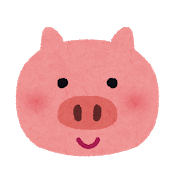Lord of Tir na nOg, Manannan is the Son of Lir, the old Irish sea god. Eclipsing his father, Manannan gave his name to the Isle of Man in the Irish Sea. He is kind and mysterious, his cloak of mists often covering entire landscapes as he moves. #FolkloreThursday
🖼: J. Brideson
Lugh is not my favorite god. He's not in my top five of Irish gods. But the tale of the Tuatha de Danann is ultimately his tale: he is, in essence, the savior of a people in bondage, born to a purpose. Thus I chose him over the Dagda, Brigid, or the Morrigan.
🖼: J. Brideson
There are many reasons to have a potlatch, a feast focused on gift-giving and community. Birth, the elevation of new leaders or retirements, marriages: these are just a few reasons to celebrate. The tribes of the Pacific Northwest keep their traditions alive. #WyrdWednesday
It was a party like no other: at Ægir's hall by the sea, Loki drunkenly accused the goddesses of infidelity, the gods of cowardice and stupidity, and admitted to orchestrating Balder's death. The next day he remembered nothing: but the gods sure did. #WyrdWednesday
🖼: B. Thorpe
Lughnasadh is the first harvest festival of the Irish year. Named for Lugh, it was actually a celebration of his foster-mother Tailtiu, Sovereign Queen of the Fir Bolg. Chariot races, log rolling, and marriages marked the day both mythically and historically. #WyrdWednesday
The Queen of Olympus is often portrayed as a villain, lashing out at Zeus' often non-consensual hookups and their children. Yet Hera is also dutiful, goddess of mothers and good wives: does one outweigh the other? A lack of agency breed desperation. #FairyTaleTuesday
🖼: M. Faye
Silver tongued and fire of hair, Loki is the great villain of Norse myth. Odin's blood brother, he causes and then solves most problems; but he cannot solve Balder's death, which he caused. For this he was imprisoned; for this he seeks revenge. #FairyTaleTuesday
🖼: A. Rackham
Largest of the birds of prey of the Middle East, the mythical Roc was a terror, able to carry off elephants and whole ships for its hatchlings to eat. The Thousand and One Nights has not one but two tales, and the origins of the Roc vary from India to Africa. #FairyTaleTuesday
The Morrigan and her sisters are most commonly associated with crows and ravens, carrion feeders who flock to fields of battle like the three war goddesses. Commonly she/they can transform into crows, as displayed in the tales of Cuchulainn. #FairyTaleTuesday
🖼: J. Juta
















